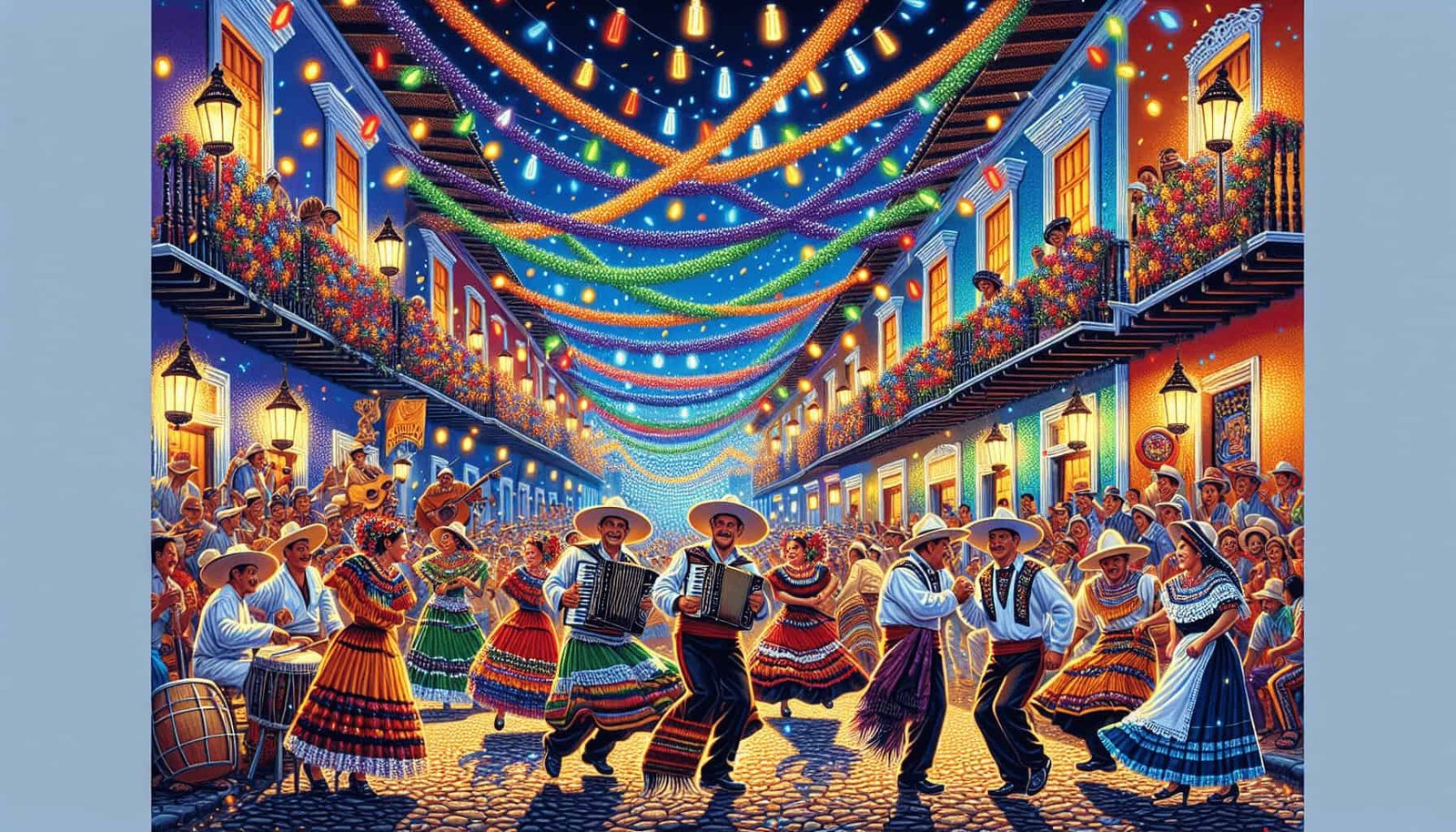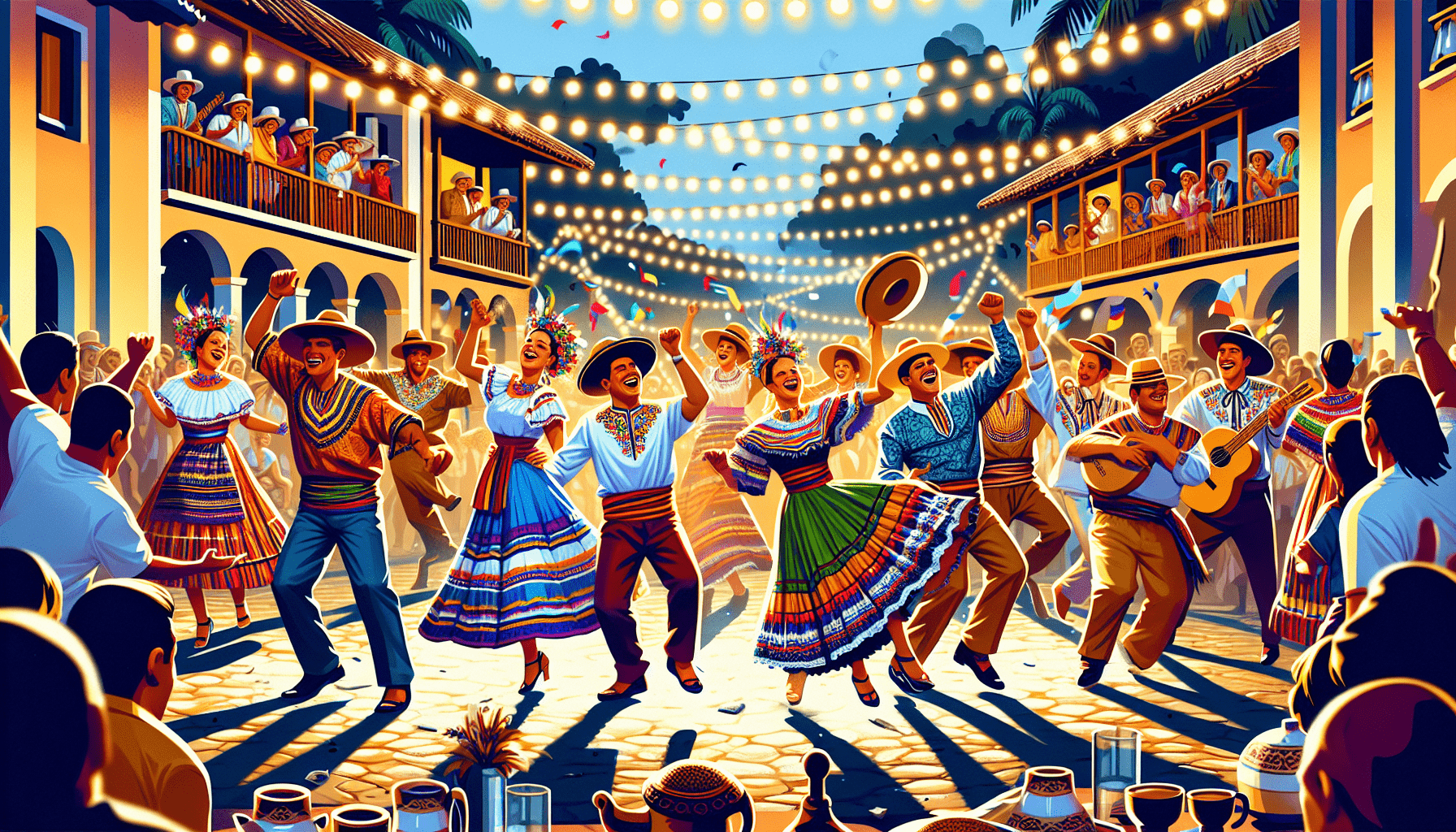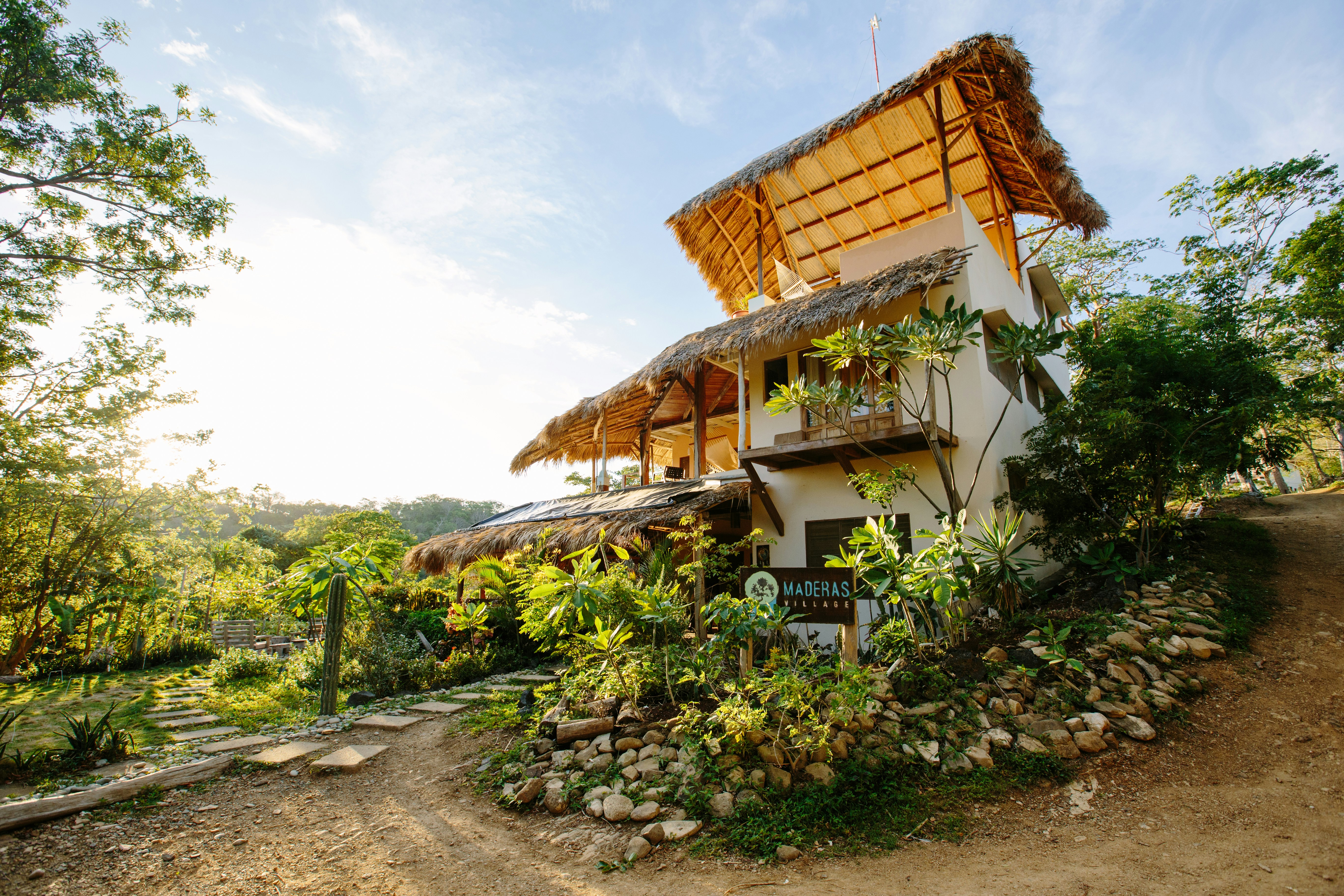If you’re dreaming of immersing yourself in the vibrant culture of Nicaragua, you’re in for a treat with its traditional celebrations and fiestas. From the lively processions of La Purísima in December to the colorful, horse-driven festivities of Hipica in numerous cities, there’s something magical to experience year-round. You’ll find yourself enchanted by the rhythmic beats of marimba music, the brilliant costumes, and the palpable joy that fills the air. Nicaraguan festivities invite you to be a part of their rich heritage, making memories that will linger long after the celebrations end. Dive into this guide to uncover how you can join in and experience the heart and soul of Nicaragua’s traditional fiestas. Have you ever found yourself longing to experience the vibrant culture and unmatchable energy of Nicaragua’s traditional celebrations and fiestas? If so, you’re in for a treat! Nicaraguan festivities are an explosion of color, music, dance, and age-old customs that will make you feel like you’ve stepped into a storybook of Latin American traditions.
Why Nicaragua’s Celebrations Are Special
Nicaragua is a country brimming with history and culture, and its traditional celebrations are a testament to this rich cultural tapestry. From religious ceremonies to community-based festivals, these events bring together locals and visitors alike in a shared experience of joy, history, and tradition.
Blend of Cultures
One of the most fascinating aspects of Nicaraguan fiestas is the blend of indigenous, Spanish, African, and Creole influences. This cultural fusion makes the celebrations one-of-a-kind, displaying a blend of rituals, dances, and music that you won’t find anywhere else.
Community Spirit
Another significant aspect is the strong sense of community. These celebrations aren’t just events; they’re communal experiences where generations come together to share in the joy and reverence of their cultural heritage.
Major Traditional Celebrations
Several major celebrations and fiestas in Nicaragua embody the heart and soul of the nation. Here’s an insider’s guide to some of the most famous and must-experience events.
La Purísima and La Gritería
Often celebrated in December, La Purísima is one of the most important religious festivals in Nicaragua, dedicated to the Virgin Mary. It culminates with La Gritería, a night of singing, chanting, and fireworks.
What to Expect
- Date: December 7th (La Gritería) and surrounding days for La Purísima
- Location: Throughout Nicaragua, but especially vibrant in León and Granada
- Activities: Singing traditional hymns, fireworks, altars of the Virgin Mary, and community gatherings
Pro-Tip
Join in the chanting of “¿Quien causa tanta Alegría?” (“Who causes so much joy?”) with the prompt response, “¡La Concepción de María!” (“The Conception of Mary!”). You’ll feel a sense of unity and excitement that’s indescribable.
Santo Domingo de Guzmán
Held annually in Managua, the Santo Domingo de Guzmán festival is a massive celebration that honors the city’s patron saint. The festivities are filled with religious processions, traditional dances, and all-night parties.
What to Expect
- Date: August 1st and 10th
- Location: Managua
- Activities: Processions, traditional dances like “El Toro Huaco,” street parties, and music
Pro-Tip
Follow the procession to experience firsthand the devotion and passion of the locals. It’s an unforgettable journey from Las Sierritas to the city center of Managua.
Palo de Mayo
If you find yourself on the Caribbean coast, especially in Bluefields, during May, you’re in for the colorful, rhythmic delight of the Palo de Mayo festival. This celebration is a mix of African, Caribbean, and indigenous influences, featuring incredible music and dance.
What to Expect
- Date: Entire month of May
- Location: Bluefields and other coastal towns
- Activities: Rhythmic dances, vibrant costumes, and delicious Creole cuisine
Pro-Tip
Don’t miss participating in or at least watching the traditional “Palo de Mayo” dance. It’s a communal dance with infectious energy that will undoubtedly get your feet moving.
La Griteria Chiquita
Similar to La Purísima but on a smaller scale, La Griteria Chiquita celebrates the Virgin Mary’s apparitions in Sutiaba, León. This festival is an excellent way to see local devotion and intricate altars up close without the massive crowds of La Purísima.
What to Expect
- Date: August 14th
- Location: Sutiaba, León
- Activities: Processions, singing hymns, setting up elaborate altars
Pro-Tip
Make an effort to engage in conversations with the locals, who are often more than happy to explain the significance of the rituals and share the traditions with you.
Food and Festivities
The culinary delights during these celebrations are another unmissable aspect. Nicaraguan food is a significant part of the festive experience and is often unique to each celebration.
Traditional Dishes
Here are some must-try dishes that you might encounter during these events:
| Dish | Description | Key Ingredients |
|---|---|---|
| Nacatamal | A traditional Nicaraguan tamale, especially popular during festivities. | Corn dough, pork or chicken, rice, potatoes, tomatoes, and wrapped in plantain leaves. |
| Vigorón | Often served during public celebrations, this dish is a delicious combination of yuca and pork rind topped with cabbage salad. | Yuca, chicharrón, cabbage, tomatoes, onions, and vinegar. |
| Rosquillas | These crunchy snacks are perfect to munch on while you enjoy the festivities. | Cornmeal, cheese, and butter. |
| Rondón | Especially during Palo de Mayo, this seafood soup is a highlight. | Fish, coconut milk, yuca, and plantains. |
Pro-Tip
Look for street vendors and local markets; they often serve the most authentic and flavorsome versions of these dishes. Don’t shy away from trying different foods—you might discover a new favorite!
Music and Dance: The Heartbeat of Celebrations
No Nicaraguan fiesta is complete without its distinctive music and dance. Each celebration features dances steeped in tradition and accompanied by vigorous, rhythmic music that truly marks the soul of these events.
Marimba
One of the oldest and most cherished musical traditions is the Marimba. This wooden xylophone-like instrument brings melodies that can enchant you and keep you tapping your feet for hours.
When You’ll Hear It
- During religious celebrations
- Local fiestas
- Cultural events
Traditional Dances
| Dance Name | Description | Occasion |
|---|---|---|
| El Toro Huaco | A traditional dance often performed during Santo Domingo celebrations, featuring dancers in bull costumes. | Santo Domingo de Guzmán |
| El Güegüense | A satirical drama combining music, dance, and theater, declared a Masterpiece of Oral and Intangible Heritage of Humanity by UNESCO. | La Purísima, other cultural events |
| Baile de Negras | A dance of African origin performed during Palo de Mayo, celebrating the Afro-Caribbean heritage. | Palo de Mayo |
| Polka and Mazurca | European-derived dances adapted to Nicaraguan culture, commonly seen in rural festivities. | Various local fiestas |
Pro-Tip
Join in the dances if you get a chance. Nicaraguans are incredibly welcoming, and it’s a fantastic way to feel part of the community. Plus, dancing is an excellent way to immerse yourself in the culture.

Planning Your Visit
A visit to Nicaragua’s traditional celebrations requires some planning to make the most of your experience. Here are some tips to help you navigate your way:
When to Visit
| Celebration | Best Months to Visit |
|---|---|
| La Purísima and La Gritería | December (First week) |
| Santo Domingo de Guzmán | August (First half) |
| Palo de Mayo | May (Entire month) |
| La Gritería Chiquita | August (Mid-month) |
Pro-Tip
Book your accommodations and flights early, especially during peak times, as these celebrations attract many visitors both domestically and internationally.
Where to Stay
Accommodations
| City | Hotel Recommendations | Alternates |
|---|---|---|
| León | El Convento, Hotel Austria | Hostal Casa Ivana, Malinche León |
| Managua | InterContinental, Elements Hotel Boutique | Managua Hills Bed & Breakfast |
| Bluefields | Casa Blanca, Hotel Oasis | Caribbean Dream Hotel |
| Granada | Hotel Colonial, Hotel Plaza Colón | Hospedaje Cocibolca, Casa Cubana |
Pro-Tip
Consider staying in locally-owned guesthouses or B&Bs to ensure a more authentic and culturally immersive experience.
Transportation
Navigating through Nicaragua during its festivities can be part of the adventure. Here are the transportation options you might consider:
| Mode of Transport | Pros | Cons |
|---|---|---|
| Bus | Economical, extensive network | Can be crowded, might not always run on schedule |
| Taxi | Convenient, especially for short distances | Can be pricey |
| Car Rental | Flexibility, can explore off-the-beaten-path places | Road conditions can be challenging, driving norms vary |
| Bicycle | Eco-friendly, immersive way to see local sights | Not practical for long distances or crowded festivities |
Pro-Tip
If you opt for buses or shared taxis, booking in advance is always a good idea, especially during major festivities, as transportation services can get crowded.
Safety Tips
While Nicaraguan celebrations are generally safe, here are a few tips to keep in mind to ensure a trouble-free experience:
General Safety
- Keep Valuables Secure: As with any crowded place, keep an eye on your belongings.
- Stay Hydrated: Celebrations can be exhausting. Always have water handy.
- Respect Local Customs: Understanding and respecting local customs can enhance your experience.
Health and Well-being
- Sun Protection: Wear sunscreen and a hat as many celebrations happen outdoors.
- Insect Repellent: Essential if you’re traveling to areas with mosquitoes, particularly during May for Palo de Mayo.
Pro-Tip
It’s always wise to have a local contact number or the number of your embassy, just in case you need assistance.

Cultural Etiquette
Understanding and respecting the cultural norms can go a long way. Here’s a quick guide to Nicaraguan etiquette:
Dress Code
While casual clothing is generally accepted, specific festivities might require more modest or traditional attire. Observing what locals wear can be a useful guide.
Greetings
A common greeting in Nicaragua is a handshake. However, during larger gatherings or festivities, a simple nod or wave can suffice.
Participation
Feel free to participate in the songs, dances, and rituals, but do so respectfully. When in doubt, ask locals how you can best participate.
Pro-Tip
A small Spanish phrasebook can be very handy. Learning basic phrases not only helps in communication but also shows respect for the local culture.
Making the Most of Your Experience
Connect with Locals
Interacting with locals can significantly enhance your experience. They can provide insights and stories that enrich your understanding of the celebrations.
Capture the Moment
Photography is a great way to capture the essence of the festivities. However, always ask for permission before photographing people, especially during religious or solemn ceremonies.
Pro-Tip
A good mix of candid shots and posed photos can provide a comprehensive visual diary of your experience.
Souvenirs and Mementos
Look for locally made crafts such as pottery, woven goods, and jewelry. These items not only make great keepsakes but also support local artisans.
Reflect and Share
Take time to reflect on your experience. Whether through a travel blog, social media, or personal journal, sharing your experience can serve as a wonderful reminder of the joy and culture you encountered.

Final Thoughts
Experiencing Nicaragua’s traditional celebrations and fiestas is like stepping into a vibrant, living tapestry of culture, history, and joyful communal spirit. From the grand religious festivals to the colorful community events, there’s something to captivate every visitor.
By planning ahead, participating respectfully, savoring the local food, and immersing yourself in the music and dance, you’ll gain a deep appreciation for what makes Nicaraguan celebrations exceptionally special. So, pack your bags, open your heart, and get ready to experience the soul-stirring magic of Nicaragua’s traditional fiestas!

